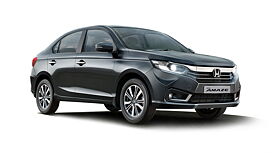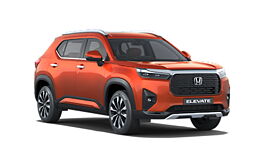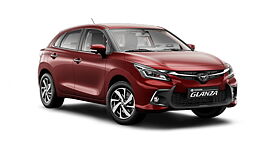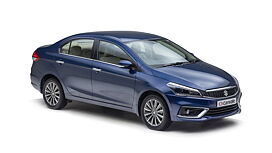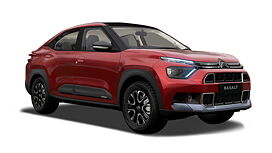Honda Civic i-Shift Range : GEARING UP!! Superb!!!!!!!
User Review on ஹோண்டா சிட்டி [2011-2014]
4.0 வெளிப்புறம் | 4.0 ஆறுதல் | 4.0 செயல்திறன் |
5.0 ஃப்யூல் எகானமி | 4.0 பணத்திற்கான மதிப்பு |
Hondas i-SHIFT System Offers Civic Buyers The Opportunity To Rest The Left Peg. Andy Enright Takes A Look
If pushed to name the best gear shift around at the moment, Id probably plump for Hondas S2000. Best of all time may well be the old Civic Type-R. Those who were lucky enough to drive a Honda NSX will remember that wristy, short throw action with fondness. All of which goes to underline the fact that when it comes to making great manual gearboxes, Honda is virtually out there alone.
There are some very good rivals around now with the Ford GT and even Volkswagens latest Passat both boasting a sweet manual shift but Honda remain the masters. Strange then, that so many Civic buyers are opting to ignore all of that and opt for the affordably priced i-SHIFT gearbox.
Unless youve been living under a rock for the past decade or so, youll probably know that sequential manual gearboxes are now getting rather good. The first such units were, not to put too fine a point on it, spectacularly lousy and even the popular second generation units were none too clever. Lately, however, there have been some that make keen drivers ponder the wisdom of buying a conventional manual gearbox, Audis DSG being at the head of that particular field. BMWs SMG has come a long way and Ferraris F1 box is a whole lot better than the first clutch-immolating clunker that appeared in the F355.
To that list we can now add Hondas i-SHIFT, priced on a Civic from £15,570. Available on all petrol-engined models in the Civic line up, this is Hondas first crack at a sequential manual gearbox. When executed well, these systems offer the plus points of both a normal manual and an automatic. In an ideal world, youd get the driver involvement, performance and fuel economy of a manual gearbox coupled with the convenience, rapid shifts and smoothness of an automatic unit.
Unlike an automatic gearbox which features a power-sapping torque converter, a sequential manual instead uses hydraulic clutches to do the work normally carried out by your left leg.
"Many Civic buyers like an easy life. The i-SHIFT system delivers"
The Honda system utilises paddles behind the steering wheel rather than the less satisfactory buttons on the wheel face that some manufacturers opt for and switching between manual and automatic modes is via button next to the gear shifter or via the paddles. When youre in manual mode, the gear is indicated on the visual display next to the speedometer so its easy to keep track of what ratio youre in. Software prevents you from being able to buzz the box by changing into first gear while zipping along the motorway for instance. Likewise, it will refuse to change up below 1,000rpm.
It is effectively impossible to stall. Stop the car in fourth gear and the system will automatically shift back to first gear in either automatic or manual modes. The i-SHIFT system also uses different shift maps depending on the driving conditions so when the Civic is being driven downhill, the system will shift down to add a little engine braking. Similarly, it wont shift down in the middle of a corner if there is any chance of upsetting the cars handling balance.
Activate the paddles and you can shift manually even when the car is in automatic mode, to take advantage of a tempting looking corner or to provide an instant burst of acceleration. Otherwise things are much as with any petrol-engined Civic. Bucking the trend for successive Civics to be bigger and heavier than their predecessors, the latest car is significantly more compact than the seventh generation model. Overall length is 35mm less and the car stands lower by the same amount.
In order to create a more dynamic stance, width has increased by 65mm. Its this change in dimensions that give the Civic its rather pugnacious demeanour. Honda are quite upfront about the shift in target demographics, heading their pre-launch material with phrases like "your granny wouldnt like it" and dubbing the car a "premium sports compact." The Civics face is quite unlike any other car on the road, brining to mind the glazed-in nose of the old Citroen SM. Headlamps sitting at the front corners are obviously old hat as the Civic adopts an illuminated bar. Few cars pursue the one-box look quite as aggressively as the Honda either, the cab forward design and wedged side profile giving the impression that the car has been moulded rather than designed on a computer. The adventurous styling doesnt stop on the outside either.
Where the old car introduced a lot of new ideas when it came to packaging, the eighth generation Civic again offers a novel approach. The dashboard is designed on two levels, the main instruments housed on the nearer one with a surrounding tier that includes auxiliary functions like stereo, heating, ventilation and trip meter. This sophisticated, three-dimensional feel to the fascia is backed up with quality materials and interesting textures. All versions of new Civic are generously specified, with the top models featuring equipment usually only found on far bigger cars.
Standard across the range are features like climate control air-conditioning, Vehicle Stability Assist (VSA), trip computer, front, side and curtain airbags, rake and reach adjustable steering column and rear Magic seats. High grade models will feature innovations such as automatic lights and wiper functions, high intensity discharge headlamps, Dual Zone Climate Control and retractable door mirrors, in addition to options such as alloy wheels, DVD satellite navigation and leather trim. Honda were late to the diesel market and now have one of the best diesels around. Likewise, its taken them a while to develop a sequential manual gearbox but if projections are correct, the Civic will soon be the biggest selling car fitted with such a system.
How times change.
நீங்கள் கருத்தில் கொள்ளக்கூடிய மதிப்புரைகள்
- ஹோம்
- ஹோண்டா கார்ஸ்
- சிட்டி [2011-2014]
- User Reviews
- Honda Civic i-Shift Range : GEARING UP!! Superb!!!!!!!

